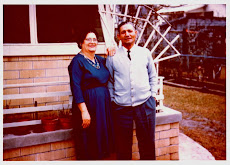The other day I had a hankering for a shrimp po-boy and a Barq’s root beer. Out of the bottle, not a can. The two just go together. If there is a quintessential Biloxi meal, this is it. Sure the po-boy was” invented” in New Orleans, and the Barq family operated a bottling plant in New Orleans long before Ed Barq started bottling sarsaparilla in Biloxi, but both sandwich and beverage reached their highest form in Biloxi.
Rosetti’s Café at the corner of Myrtle Street and Howard Avenue served the world’s best po-boys – dressed and pressed. Dressed, of course, refers to the addition of sliced tomatoes and shredded iceberg lettuce. Pressed meant they threw a flatiron or a skillet on the sandwich to make the French bread all toasty and crispy. When you bit into it, all these wonderful messy crumbs fell all over the place. The measure of a truly great po-boy is in how much debris you have to clean up afterward.
Having grown up on pressed po-boys at Rosetti’s I did not realize that the rest of the world does not do this. After enduring a lifetime of blank looks whenever I requested “pressed, please," I just started making po-boys at home. But you can still get them pressed at the Ole Biloxi Schooner, which is what Rosetti’s eventually became.
Drinking Barq’s is just a matter of local pride even though the drink hasn't been bottled in Biloxi in years.
Note that I call it Barq’s, Not root beer.
Barq’s, as you will figure out from your first sip, is in fact root beer, but for years no one called it that for two reasons. For a long time, the Hire’s company owned the trademark on the term “root beer," and once sued Barq’s. The other reason was that Barq’s was the first sarsaparilla drink to contain caffeine, an illegal ingredient in root beer until 1960. No wonder it is so addictive.
The formula was created by Edward Barq, originally one half of the New Orleans’ Barq’s Bottlers, in the late 1890s at his recently purchased Biloxi Artesian Bottling Works. In addition to the caffeine, it differed from other root beers in that it contained less sugar and more carbonation with a less foamy head. There was also a Barq’s crème soda, including a red version, that was bottled by the New Orleans branch of the family. They also bottled the root beer, but made their own syrup, so it tasted slightly different.
In Biloxi, Barq’s was just plain Barq’s with a slogan of “Drink Barq’s. It’s good.” No native Biloxian would dream of drinking anything else.
For years Barq’s remained an under the radar local product known for it’s distinctive long-necked diamond-patterned bottle, blue and orange logo and it’s annual Mardi Gras float shaped like a giant Barq’s bottle.
Like every Biloxi child, my school bag included a handful of Barq’s pencils and a Barq’s wooden ruler. My grandparents’ shed, and every shed on the Point, sported a rusty blue and orange Barq’s thermometer for recording those sizzling summer temps.
Sometime in the 1970s, the Barq family sold the business. The Coca Cola company acquired the Biloxi and Louisiana branches of Barq’s in 1995. Over the years, the various new owners started messing with it, changing the label, calling it root beer, putting it in cans, adding (and then discontinuing) new flavors like grape, lime and orange. They still make the crème soda – both the French vanilla version and the red one so dearly loved in New Orleans.
Thankfully, despite all the changes, you can still get Barq’s served in a bottle at just about any restaurant on the Mississippi Coast, but you do have to ask for it. It’s like a secret handshake.
Barq’s is best enjoyed with a po-boy (preferably seafood), but it also makes a good float over vanilla ice cream. One of my aunts used to baste her Easter ham with it. If you’d like to experiment, there are a slew of recipes here:
http://thebarqsman.com/?cat=5/
Friday, June 12, 2009
Subscribe to:
Post Comments (Atom)


Now I've got a hakering for a Barq's! Love that picture of the Barq's float, too! LAS
ReplyDelete